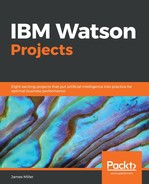Surfboard construction starts with a dense foam core and stringer, which is then covered with several layers of an epoxy resin, fiberglass, paint, and then finished with a high-gloss protective layer. Assembly also includes attaching one or more fins.
So, to define our supply chain, we have a list of materials:
- Foam core
- Stringer
- Resin
- Fiberglass
- Paint
- Protective treatment
- Fins and fin assembly
The materials listed here are shipped by a number of suppliers to one of two assembly facilities where the boards are fashioned and then sent to a warehouse where they are inventoried until ordered. Once an order is placed by the surf shop, the boards are picked, packed, and shipped and voila! – We have a supply chain that describes the chain management:

Although supply chain management has multiple objectives, we will focus in this chapter on one of the most fundamental: achieving efficient fulfillment. Efficient fulfillment is (perhaps loosely) described as making inventory readily available to the customer to fulfill demand. However, readily available must also be accompanied by the most efficient use of cross-chain resources, maintaining minimal inventory levels, ensuring little or no waste, and permitting the lowest costs overall.
In the next section, we will jump into the data from our imaginary surfboard scenario.
